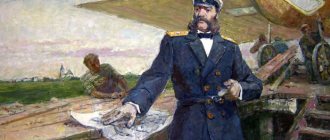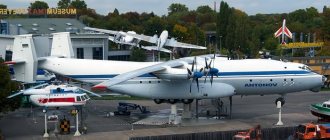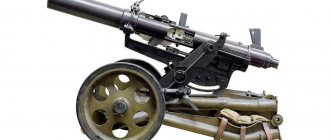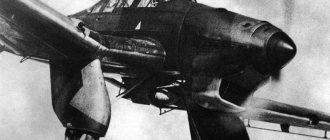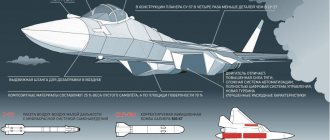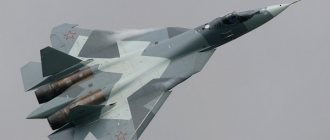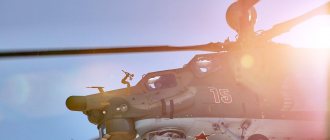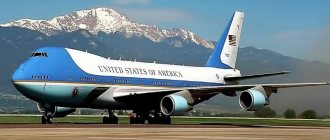An Inventor's Odyssey
The creation of the Russian aircraft is surrounded by a large number of historical mysteries, myths, inaccuracies and unresolved issues. Both objective historical realities and the peculiarities of thinking of domestic bureaucrats are to blame for this.
Sailor with a dream of wings
It is clear that the development engineer was not an aircraft designer - in his time there was no such profession. His biography was quite ordinary for a conscientious, poor nobleman. Alexander Fedorovich Mozhaisky (1825-1890) was a naval officer who rose to the rank of rear admiral. Navy officers often had good engineering training and were able to carry out complex calculations.
In 1850-1855, the young sailor took part in a long voyage to Japan, and even survived a shipwreck there. There is reason to believe that he became the author of the design of the first ship in Japan equipped with a keel.
Then he took part in the Khiva campaign, as a result of which he compiled a description of the Amu Darya and the Aral Sea.
Mozhaisky also had the opportunity to serve on the frigate “Gremyashchy”, on which members of the royal family traveled.
The inventor had already served the rank of rear admiral “in civilian life” - he had to leave military service after the defeat in the Crimean War. He held administrative positions first in the Vologda and then in the Podolsk province.
In the latter, he gained a bad reputation, including due to aviation experiments. The peasants considered this “blasphemy.” Alexander Fedorovich also worked at the St. Petersburg Shipping Company, where he well mastered the principles of operation of steam engines.
Objective difficulties
In 1856, a young naval lieutenant became interested in the aerodynamics of bird flight and began to calculate the specific loads on their wings. Later he experimented a lot with kites and studied the properties of propellers.
There is evidence that the researcher himself took to the air several times on a kite of his own design.
The results of these studies turned Mozhaisky into the inventor of the world's first aircraft. Although the only “field test” of the sample should have been considered unsuccessful, many of Mozhaisky’s ideas were successfully developed by other developers.
In his work, the inventor had to deal with serious unfavorable circumstances. In the second half of the century there was no theory of aerodynamics (it was developed by Zhukovsky later). There were no materials that combined strength and lightness (aluminum at that time was classified as a precious metal). The choice of engines was also small - a steam engine, and nothing more.
The idea of creating an aircraft with the ability to control and is heavier than air has already gained popularity. Proposals on this part were put forward before Mozhaisky, including in Russia. But the design of an ornithopter, that is, a machine that flaps its wings in a bird’s likeness, seemed more attractive then.
Taking into account these objective difficulties, Mozhaisky’s achievements evoke even greater respect.
Problems of a different nature
But there were other obstacles. First of all, building an airplane cost money, and Mozhaisky didn’t have much of it. He was well off, but not rich. He managed to receive money from various state commissions, but not always when he asked for it, and always less than required. It also happened that he was advised to do something else (including ornithopter!)
To a large extent, the first aircraft was built at the expense of the designer himself. This also explains the modest success - Mozhaisky could not afford all the necessary equipment and assistants.
Dismissed due to staff reduction
By that time, the experienced naval officer was attracted by another element - the sky. He was interested in the experiments of aeronauts from other countries, while in Japan he observed the flights of huge kites launched by local residents, and the first ideas for the project of his own aircraft were born in his head.
Article on the topic
Coming out of the darkness. How sailor Pyotr Koshka became the occupiers’ nightmare
However, for the time being, Mozhaisky’s ideas did not receive real implementation due to his busy work.
In 1858, Mozhaisky took part in the Khiva expedition, organizing its movement by water on ships specially built for this purpose. He compiled the first description of the water basin of the Aral Sea and the Amu Darya River. Upon returning from the expedition, Mozhaisky was appointed senior officer of the 84-gun ship Orel.
On September 8, 1859, Mozhaisky received the next rank of captain-lieutenant. After the launch of the clipper "Vsadnik", he was appointed its commander and sailed on it in the Baltic Sea until 1863.
His further career was affected by the consequences of the Crimean War - Mozhaisky was dismissed due to a forced reduction in the size of the fleet.
It won't fly! What did the contemporaries of Wright, Chkalov and Gagarin doubt?
Read more
The path to the first flight
The history of the creation of the first aircraft is replete with “blank spots”. It contains many inaccuracies and discrepancies. But there are also facts that have been established precisely. Many of them are related to the circumstances of the inventor’s struggle with bureaucracy.
Overcoming bureaucratic obstacles
In 1872, the aircraft designer completed calculations of lift and drag for various conditions. They were made based on his work with the flight of birds. These studies led him to the idea of an "aircraft", that is, an aircraft close to the modern type, rather than an ornithopter.
In 1876, the inventor approached the War Department with his project for funding. He initially intended to make his creation military - it was planned to install a bombing sight on it. The war with the Turks (1877-1878) was approaching, and the timing was well chosen. The ministry approved the project, but instead of the requested 19 thousand, only three were allocated.
The aircraft designer continued his work anyway, and 2 years later presented a model of the future aircraft to the commission (of a different composition). He was ready to move on to making a model capable of carrying a person, but this required funds. The commission refused, giving advice about an ornithopter.
Without giving up, the engineer obtained for himself a small sum of 2,500 rubles and the right to travel abroad, which gave him the opportunity to order engines in England based on his own designs. He paid extra for other materials and equipment out of his own pocket. In 1881, everything necessary was purchased. Mozhaisky again asked the Ministry for financial assistance (5 thousand) to carry out the work, but this time the request was “turned down” by the Tsar personally.
Mysteries of flight
But then the mysteries begin. Everyone agrees that a full-fledged model of A.F. Mozhaisky’s aircraft with a person on board was tested. But even the date of this test is in doubt. The official name of the day is July 20.
But for some reason the years vary among different specialists - from 1882 to 1885.
A report dated 1884 talks about previously successful tests of the “model”. Therefore, if you need to give an exact answer to the question of when the airplane was invented, you will have to name the year 1878. Then Mozhaisky received a “privilege” (patent) for his invention. But the design of 1881 was somewhat different from what was announced.
The test results are described differently. According to the most popular version, the world's first plane nevertheless took off from the ground, accelerating on a wooden walkway with a slight slope, and then fell onto the wing due to a pilot error. But there is also an opinion that the takeoff did not take place at all, and the plane crashed during the takeoff run.
No one doubts that the inventor himself did not try to fly.
It’s understandable - he’s not old enough to fly. The first Russian pilot was a mechanic, Mozhaisky’s assistant. It is known that he suffered non-life-threatening injuries in the accident, but it is not certain what his name was. Many historians name the name N. Golubev. But others are sure that there was no person with that name in Mozhaisky’s circle.
DIY Project
In 1879, Alexander Mozhaisky was re-enlisted for active military service with the rank of captain 1st rank and sent to the Naval Cadet Corps, where he taught a course in maritime practice.
But he never thought of abandoning his project. Not receiving all the funding at once, he sought support here and there, collecting donations from aeronautics enthusiasts.
In 1880, captain 1st rank Mozhaisky made a business trip abroad, and in the spring of 1881 he brought two steam engines for his aircraft from Great Britain. As early as 1880, he applied for a patent (“privilege”) for his “aircraft projectile,” and in November 1881, the Department of Trade and Manufactures granted Mozhaisky Russia’s first aircraft patent.
Model of an airplane invented and built at his own expense by Alexander Mozhaisky. Photo: RIA Novosti/ A. Varfolomeev
At various enterprises in Russia, in particular at the Russian-Baltic Plant, Mozhaisky places orders for the manufacture of various parts of his aircraft.
In July 1882, Alexander Mozhaisky resigned from military service “due to domestic circumstances.” Upon his dismissal, he was awarded the rank of major general, and later rear admiral.
But in 1882, he was most occupied with the implementation of his own project, which had entered its final phase. He got the military department to allocate him a site on a military field near the Dudergof station near Krasnoe Selo near St. Petersburg for the construction and testing of the aircraft.
Wings for the Motherland. Andrei Tupolev taught Russia to fly
Read more
Specifications
The world's first aircraft was stored in improper conditions for a long time. After the death of its creator, it was completely dismantled. It was not used in practical conditions, and its technical characteristics were reconstructed from Mozhaisky’s documents and descriptions of eyewitnesses.
Basic indicators
Mozhaisky's aircraft should be classified as a fuselage propeller-driven monoplane. To create it, wood, varnished silk fabric, and wire were used. The engines were made in England. Russia itself has not yet produced enough good cars, and the American model was rejected by the designer.
According to research by technology historians, the aircraft had the following indicators:
- Height – 7.5 m;
- Length – 25 m;
- Wing area – 329 sq.m;
- Wingspan – 23.2 m;
- Maximum take-off weight – 1266 kg;
- Speed (estimated) – 40 km/h;
- Number of screws – 3 (2 on the wings, 1 on the nose);
- Number of engines – 2;
- Total engine power – 30 hp. (20+10)
The plane had horizontal and vertical controls. During the work, changes were made to the design. So, according to the design, all the screws were supposed to be the same size, but the researchers found that in the final version the front screw was made larger than the other two. The engines were offset and the aircraft received a weighted nose.
The pilot had two control rudders, an inclinometer, an altimeter, and a compass at his disposal. The creator called his brainchild “Firebird”.
Modern verification
In Soviet times, several prominent specialists in the field of aviation (V.F. Bolkhovitinov, B.N. Yuryev, V.B Shavrov, etc.) conducted research on the Mozhaisky project in order to check the possibility of its implementation.
Scientists have expressed different ideas. Many assumed that with steam engines the plane had no chance of taking off at all. But the main point of view was that it was possible, and even stabilized horizontal flight was possible. But this required additional conditions:
- Inclined runway;
- Engine afterburner at the start;
- Headwind at takeoff.
Most experts agreed that with the available power of the machines, the aircraft had little chance of stable flight.
Obviously, the inventor also understood this. Soon after the tests, he tried to order more powerful engines. Lack of money got in the way.
Real results
Despite the modest results of the Firebird flight, A.F. Mozhaisky’s contribution to the development of aviation is great. Many of his ideas were then applied to more successful designs.
- The engineer calculated formulas for aviation: the ratio of drag force and lift force;
- Mozhaisky, in the process of work, proposed the first attempts to formulate the laws of aerodynamics;
- He used push and pull propellers; Nowadays, most propeller-driven aircraft use pulling structures;
- The inventor was the first to propose a fuselage type of aircraft, which turned out to be the most promising;
- Mozhaisky developed the theory of vertical and horizontal control. He was the first to put forward the idea of ailerons (controlling moving parts of the wings);
- The fuselage of the aircraft was made in the shape of a boat, and the inventor himself argued that his creation should float. Thus, the Russian engineer should be considered the father of "flying boats".
At that time, Mozhaisky’s developments did not receive wide publicity. As a result, balloonists died for a long time due to the lack of control systems (this is how the famous inventor Otto Lilienthal crashed). And the Wright brothers had to “reinvent the wheel” all over again.
They did it under more favorable conditions, which is why they got better results. At the same time, the brothers did not take into account some details that were interesting to Mozhaisky - there were no ailerons in their designs.
Personal life
At the end of the Crimean War, like many naval officers, he was sent on indefinite leave. This period was marked by his marriage to eighteen-year-old Lyubov Dmitrievna Kuzmina. The couple met in the spring of 1859, when Alexander Fedorovich came to visit his friends in Vologda. Lyubov Dmitrievna had a good education, was known as a deeply religious person and played excellent music. After getting married, the family settled in Kotelnikov, their house is now a museum. Lyubov Dmitrievna gave birth to heirs, sons Alexander and Nikolai. But family happiness did not last long - at the age of 23, Lyubov Dmitrievna died from a transient illness. Alexander Fedorovich never married again, devoting his life to children and his dream - designing the first aircraft.
In books and films
But later the inventor was given his due. A village in the Vologda region, where he once lived, received his name. The St. Petersburg Military Space Academy bears his name.
Mozhaisky himself and his plane even turned into heroes of cinema and literary works.
In 1950, the poet S. Vasiliev wrote a poem about the testing of the first aircraft and its designer. In the same year, director V.I. Pudovkin depicted the testing scene of Mozhaisky’s aircraft in his film about Zhukovsky. Modern literature has turned the “Firebird” into a hero of science fiction works.
In 2013, the book “Airplanes over Mukden” (alternative history genre) by the Belarusian writer A.E. Matvienko was published. In it, the fate of the invention was more favorable. And in 2016, the iconic V. Pelevin released “The Lamp of Methuselah,” which also depicts the invention of the first airplane in a fantastic form.
Russia is not the homeland of elephants, and it is not worth attributing all the world’s inventions to Russians. They've actually done enough. Including the invention of the airplane.
First experiments
The year 1876 marked the beginning of serious work on the development of the first experimental model of a heavier-than-air aircraft. The thought of him tormented the inquisitive mind of Alexander Mozhaisky (the biography of the designer is full of interesting facts and events) since his service on the Diana. In those years, newspapers often published articles on aeronautics, claiming that the hour was near when people would be able to fly like birds. Once, while on duty on the Diana, Mozhaisky witnessed how a strong gust of wind hit a seagull against the mainmast. Alexander Fedorovich took the bird that had uttered its last cry to his cabin. With its help, he tried to find properties that help birds fly.
Mozhaisky consulted with the best Russian scientists, made many calculations, and conducted thousands of experiments to create the world's first flying machine. More than a decade earlier than Lilienthal, he discovered one of the basic aerodynamic laws about the existence of a relationship between speed and the weight of an object and the plane. The test of the model was successful: the kite glider he designed (towed by horses) was able to lift it into the air twice. And already in 1877, Mozhaisky successfully demonstrated a model driven by a clock spring. Its speed reached 15 km/h, and a load was even attached to the prototype.
Tests
The proposed hypothesis explains where the flat wing and suboptimal propellers came from on the “plane.” This was done for research purposes. Of course, no one expected THIS to take off, but the aerodynamic coefficients needed to be obtained for a flat wing. And also find an aerodynamic focus, draw a polar, take photographs of ribbons (flow pattern) and much more.
To confirm this hypothesis, there is a photograph of the “plane” preparing for launch. The lower wing braces are missing from the photo (should be where the red lines are). How will it fly, since it is the lower guys that perceive the lifting force? On the left in the photograph is a man in an officer’s uniform, perhaps Mozhaisky himself, looking quite indifferently at the actions of his subordinates. What is this, stupidity? Hardly. There are no such stupid caperangs. Then what do we see in the photograph? Most likely, the technicians are installing the next wing on the test stand, and the lower guys have not yet been wound up. Routine research work is underway.
Airplane plan
Having developed an aircraft project, in the spring of 1878 he presented it directly to the Minister of War, asking for support for the development of the aircraft. His plan called for the aircraft to consist of the following elements:
- boats where people will be accommodated;
- two fixed wings;
- tail, the main purpose of which is to change the direction of movement due to the ability to rise and fall;
- three screws: one large in front and two small behind;
- a trolley on wheels located under the boat, its purpose is to give the aircraft the speed necessary for takeoff;
- two matches for strong fixation of the wings and lifting of the tail section.
The engine was supposed to be two steam engines: one drives the nose propeller, the second drives the two pushing rear ones. The attached cost diagram, drawings, calculations and descriptions did not convince the ministry commission: citing insufficient capacity of the installation, the application was rejected. In 1880, financing was agreed upon and a business trip abroad was organized, from where Mozhaisky delivered 2 steam plants equipped with a water-tube boiler and a refrigerator. In the fall of 1881 he became the owner of the country's first patent.
Turbohod
On December 1, 1914, the passenger ship Patria was laid down, which made its first voyage in 1919. During 16 years of operation by foreign companies, the ship traveled hundreds of thousands of miles between the Netherlands and Indonesia, and in 1935 it was sold to the USSR. The Soviet Union used it as a training ship, changing its name to “Svir”. With the outbreak of World War II, the ship entered military service, and in 1942 it sank during a bombardment near Leningrad. After a year of peaceful life, it was raised and sent for repairs. After a long restoration, the ship acquired a modern look and was modernized into a cargo-passenger liner. The turboprop was given a new name - “Alexander Mozhaisky”. His life continued on the passenger line of the Far East of the country until the spring of 1970. It is interesting that the turbo ship “Alexander Mozhaisky” was transferred to the village of Wrangel as a hostel. After 8 years, the ship was sold to Hong Kong for scrapping.
